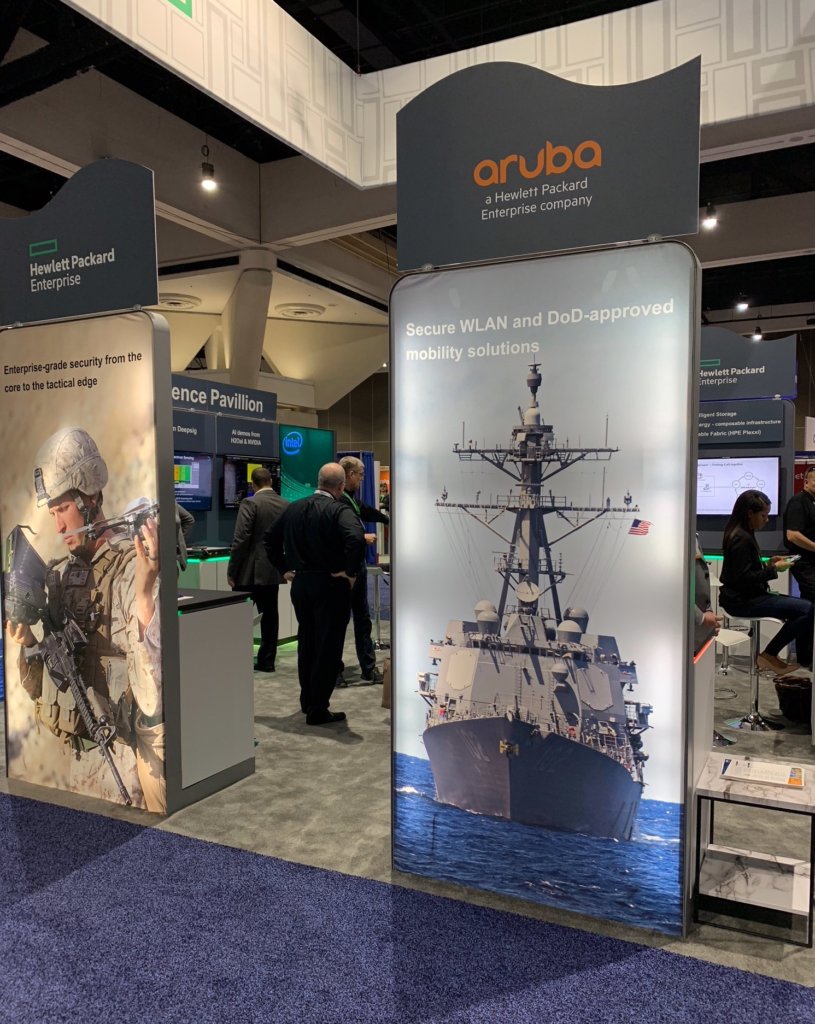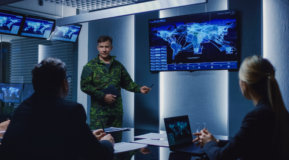This guest blog is written by my colleague, John, Klopacz, Sales Director Navy and United States Marine Corps with Aruba Federal, a Hewlett Packard Enterprise company.
The Aruba Federal team and I had the privilege of attending the West - AFCEA & US Naval Institute conference in San Diego in February. The top naval conference on the west coast, this year’s AFCEA West was focused around the US Navy’s readiness to compete, deter and win globally.
 Here are our five key takeaways:
Here are our five key takeaways:
Takeaway #1: The US Navy is employing agile software in a cloud environment to go beyond “information in warfare to information as warfare.”
Information is a common denominator in advanced technologies like artificial intelligence, cybersecurity, blockchain, cloud, the Internet of Things and quantum computing. Rear Admiral Boris Becker, USN Commander of Space and Naval Warfare Systems Command (SPAWAR), emphasized that the Navy was developing existing technologies to “develop lethal capabilities in our software.”
Takeaway #2: The Navy is attempting to streamline its DevOps test and certification processes.
Agile software development is delivering significant benefits to the Navy’s research, development, test and evaluation community. Rear Admiral Becker also remarked upon the test and evaluation processes for systems, technologies and capabilities. Navy officials are “moving out on determining how we can look at testing the process and certifying the process” while ensuring that “we’re not conducting the same level of effort to achieve a certification that may be umbrellaed by the process itself.”
Takeaway #3: Cyber-espionage is a key concern, making it critically important that USN networks are well-protected and ready to deploy without hinderance.
Thomas Modly, Under Secretary of the Navy, expressed concerns about exposure at the tactical edge and elsewhere. “We worry about it there, but there’s also the concern our vulnerabilities may be so great that we may not be able to get our ships underway in San Diego if they hit us in a certain way. I take this very seriously.”
Takeaway #4: It’s imperative that USN networks are strategically predictable while being operationally unpredictable.
“We all spend a great deal of time thinking about great power competition, but the fight is right now in cyberspace,” said Vice Admiral Timothy “T.J.” White, commander, US Fleet Cyber Command/US 10th Fleet. “That is why we, the Navy and Joint cyber force, are all postured to defend forward in order to support the Dynamic Force Employment model.”
Takeaway #5: Defending the network and ensuring it’s operational is the key to winning the cyber-battle—and that may ultimately win the war.
The war in cyberspace must be fought by both military and industry. With the prevalence of cyber-espionage, it’s everyone’s responsibility to protect their intellectual property. Ultimately, whoever wins the cyber-battle may win the war. “Whoever can defend their network or bring it back in the fastest manner—because it’s going to get attacked, it’s going to get degraded—whoever can defend and be more resilient is probably going to win,” said General Robert Neller, Commandant of the United States Marine Corps.




